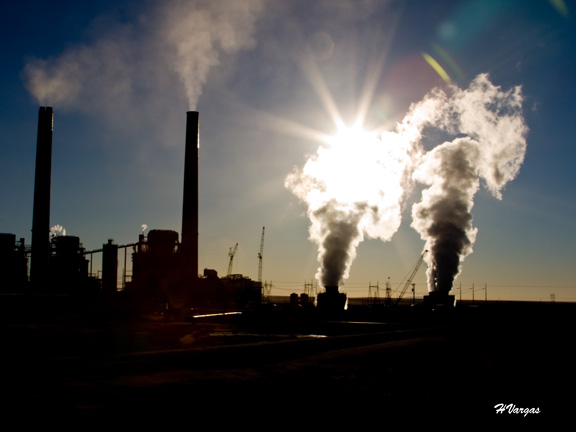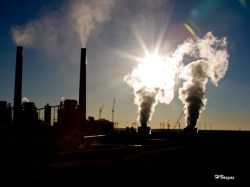Pretty much every power plant requires water to work. Coal, natural gas, nuclear, and even some types of renewable energy need water to create steam and to cool down. These plants account for more than 40 percent of the fresh water drawn from lakes and rivers in the U.S. each year. But climate change limits access to that water and poses a major threat to our ability to keep power plants running, according to a new report from the Union of Concerned Scientists [PDF].
If plants don’t have enough water, they can’t operate. The report notes that the summer drought in Texas in 2011 forced one power plant to cut its hours of operation, while others had to pump in water from new sources, which led to fights over rights to water. Last summer, a power plant in Tennessee had to shut down because it was too hot, while others had to scale back production because of heat and drought.
The report makes clear that these large power plants are basically stuck in a horrible cycle. Many of them burn fossil fuels, which heat up the planet. A hotter planet leads to more droughts, which make it harder for the power plants to operate.
The report is optimistic about opportunities to change that cycle. It notes that if the U.S. significantly lowers its carbon output — with more renewables, better efficiency, and newer power plants — we could cut power plants’ water consumption by 85 percent by 2050. That would also, of course, slow down global warming.
 This story was produced by Mother Jones as part of the Climate Desk collaboration.
This story was produced by Mother Jones as part of the Climate Desk collaboration.



